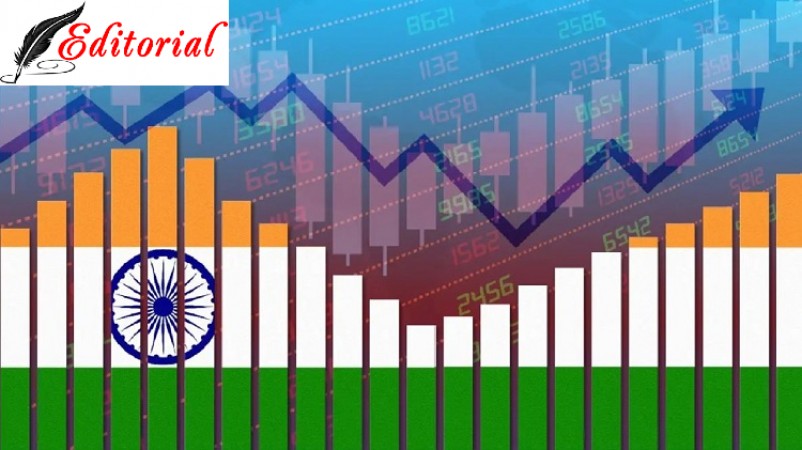
India's economy, gauged by the Gross Domestic Product (GDP) and the Gross Value Added (GVA), embarked on an exhilarating journey in the first quarter (Q1) of the year, registering a robust 7.8% growth. This surge, while commendable, falls just shy of the Reserve Bank of India's (RBI) ambitious 8% growth projection. Looking ahead, the RBI anticipates a gradual deceleration in the growth rate for the remainder of the year, culminating in a 5.7% uptick in the final quarter—a narrative that we eagerly await clarification on during the RBI's Monetary Policy Committee (MPC) meeting in October.
Despite the RBI's cautious stance, Chief Economic Adviser V. Anantha Nageswaran remains sanguine, dismissing concerns about achieving the coveted 6.5% growth target for the fiscal year. India continues to outpace its global peers, firmly retaining its title as the fastest-growing major economy. In stark contrast, China grapples with a modest 6.3% growth rate, battling a looming economic slowdown. However, as we chart a course through the months ahead, we must brace for challenging headwinds on the global stage, with adverse impacts already evident in the form of diminished goods exports and manufacturing woes. Meanwhile, domestic pressures rear their head, with surging inflation and the looming threat of a lackluster monsoon casting shadows over crop yields and farm incomes.
The agricultural sector's GVA managed to maintain its growth trajectory, notching a 3.5% increase in Q1. Yet, there looms the ominous specter of the monsoon's sluggish progress and concerns over depleting reservoir levels, potentially jeopardizing the upcoming rabi crop. The services sector boasts robust headline growth rates, exemplified by a remarkable 9.2% surge in trade, hotels, and transportation. However, the undercurrents of a nascent recovery are palpable, with employment-intensive segments still lagging 1.9% below their pre-COVID-19 levels—a stark reminder that our journey towards full recovery remains incomplete.
While government assertions herald a resurgence in private investments, a closer examination of gross fixed capital formation trends suggests that government capital expenditure continues to shoulder the bulk of the burden. The manufacturing sector's GVA, after six months of contraction, posted a modest acceleration from 4.5% to 4.7%. Yet, the eagerly anticipated widespread revival in consumption demand remains elusive. Private consumption expenditure did see a commendable 6% uptick, but economists contend that this surge is primarily driven by high-income earners. The longevity of the current bout of inflation, especially in essential food items, holds the key to unlocking demand from lower income segments—an outlook that remains uncertain. Moreover, a fragile rural demand recovery could easily unravel if farm incomes take a hit. Policy interventions aimed at curbing inflation, such as export restrictions on staples like rice and onions, may impede growth and disrupt the external trade balance. Conversely, relief measures, like the recent Rs. 200 reduction in LPG cylinder prices, though well-intentioned, introduce fiscal risks and potential growth uncertainties, especially with an impending general election on the horizon.
India's Digital Advancement Presents Worldwide Solutions: PM Modi